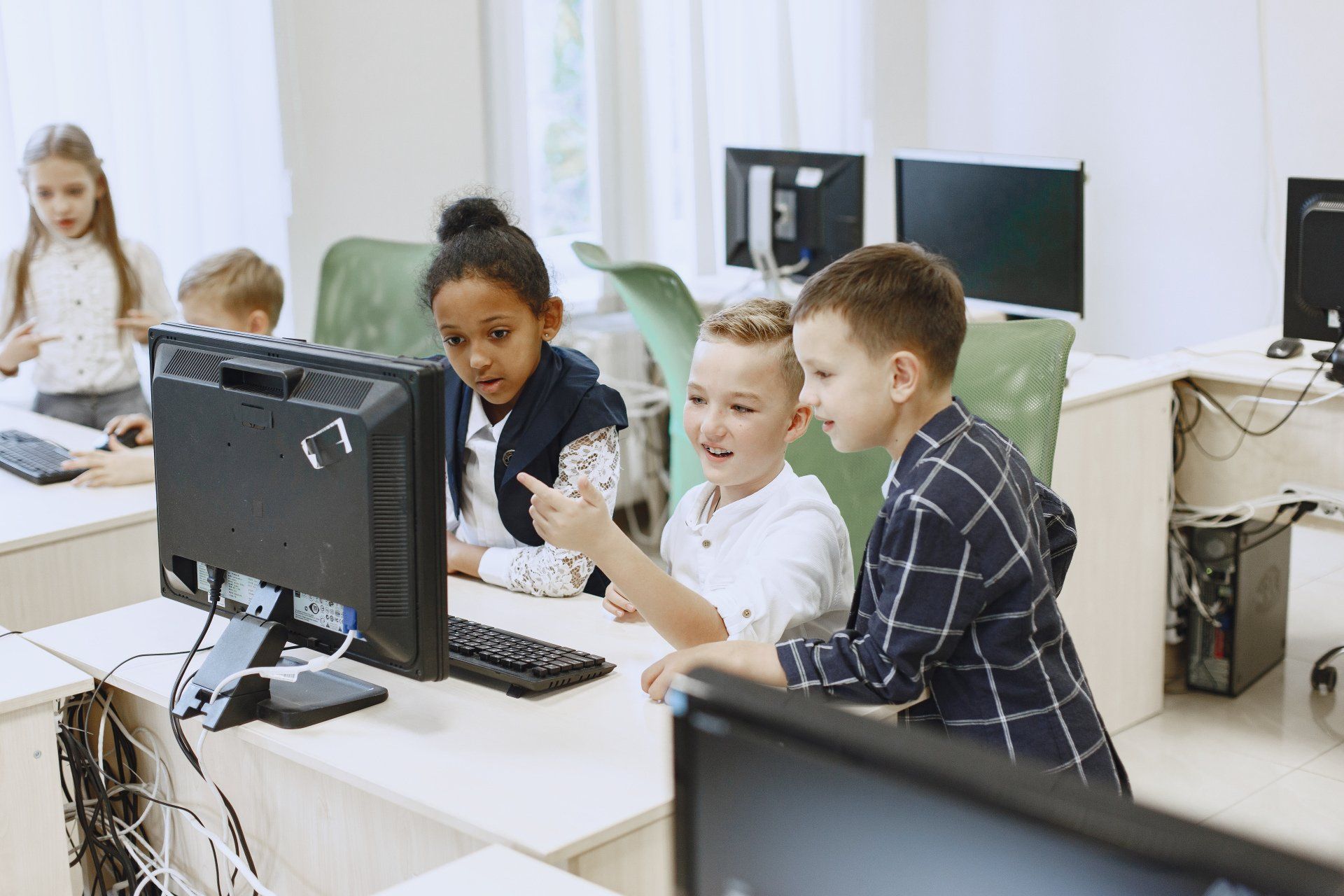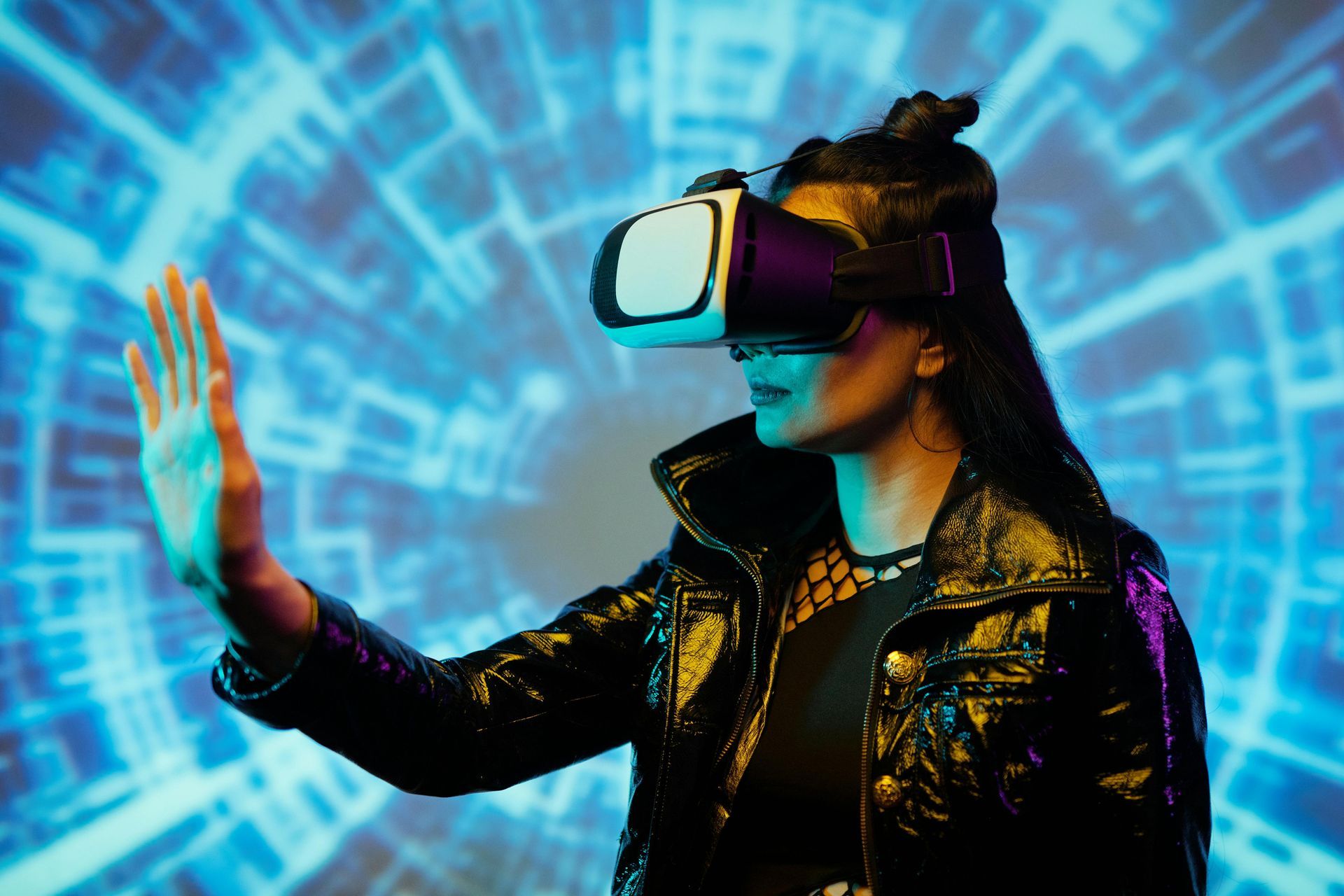TOP TRENDS IN EDUCATION AND TECHNOLOGY PART TWO
Gamification in Education

Jamieson Lee Hill, 8th September 2023
In this second article on education and technology trends we explore gamification and its history. We also look at how and why it is used, and some of the main components of a gamified approach. Gamification is an inspiring complement to teaching and learning!
IP House And The Gaming & Education Sectors
IP House already hosts key gaming businesses and educational organisations. We help them leverage low latency networks and routing to help ensure a great global presence and experience is achieved.
What is gamification?
“the practice of making activities more like games in order to make them more interesting or enjoyable”
Cambridge Dictionary
Gamification is used in education and also many industries to make learning and training more engaging and fun for participants.
Who invented the term gamification?
The term "gamification" was first coined by Nick Pelling, a British programmer and inventor, in 2002. However, it wasn't until late 2010 that the term gained widespread recognition. Pelling was well known for creating the game Frak in 1984. He saw the value of implementing game mechanics in different industries and businesses. Peling was inspired to spread his game design to other disciplines.
“As games became increasingly popular, articles started to emerge, outlining the countless uses of gamification. The gamification history helped this concept become a catalyst – a powerful marketing and social tool that can be used in the workplace.”
Source: Spinifycom, March 5th, 2023
The origins of gamification in education
The origins of gamification in education are not one hundred percent clear but it is widely believed that gamification was originally used in the education of children in the Scout movement in the 1900s. The scouts used ‘active educational methods’ to help build the character of young children but obviously without the technology that we have today.
1980s gamification in the classroom
Early examples of gamification in the classroom go back to the 1980s and video/computer games. 'Where in the world is Carmen San Diego' was a very successful game released by software developer Broderbund Software in 1985. Players operated as detectives, with the ACME Detective Agency, searching for a former ACME Detective Carmen SanDiego. Simultaneously they learned about geography and history. With 70 awards, including the Silver Apple Award from the National Educational Media Network in 1996, it was a massive success. Read more here for other examples.
When was the first modern gamification platform launched?
Rajat Pahari launched the first modern gamification platform in 2005. It was called ‘Bunchball’. Bunchball is a cloud-based platform designed to help organisations and businesses leverage the power of gamification. The game mechanics included leaderboards, points, missions, and badges. It was merged into the working environment to motivate staff.
In 2007, Kevan Davis developed a web app called Chore Wars. The app brought gamification to daily household tasks. It employed a collaborative RGP-style system.
Why is gamification ideal for the classroom?
“Ninety-seven percent of adolescents play at least one hour of video games per day, so bringing games into the classroom is intuitive for students.”
Source: eschoolnews.com, 2023
Students are highly motivated by gamified learning; it helps them to engage fully with education and learning. Also, using a system of points, leaderboards, and badges keeps them excited and spurs them on to learn more. It also has other beneficial factors as shown in the following extract,
“Bringing games into the classroom also gives students an opportunity to explore social-emotional principles, increasing their adaptability and communication and improving their ability to work with others.”
Source: eschoolnews.com, 2023
The growth of esports in schools
In recent years there has been an increase in schools taking part in team esports. This is expected to continue in the future with schools investing more time and money into esports resources for students to practice and take part in games. Research shows that academic esports have a beneficial effect on ‘academic performance and social-emotional learning’. Furthermore, some students who are very successful in esports can gain scholarship opportunities.
Gamification and motivational methods
Teachers can use gamification to harness the competitive nature of students as they compete for points and badges on leaderboards. Gamified aspects of lessons can make the learning process more exciting and engaging. Let’s explore points, badges, and leaderboards.
Points
Points are given out and used to measure the academic progress of students. The allocation of points is down to the teachers but it can be for completing tasks, contributing positively in class, model behaviour, or excelling in homework. Gaining points gives students a feeling of accomplishment and inspires them to take greater responsibility and ownership over their learning in their quest for more points.
Badges
Badges are another effective way to show achievement by students. They can be given out at certain milestones or when students show particular skills or abilities. They help to build students’ self-esteem and confidence as they share their badges with others or put them in their portfolios
Leaderboards
Leaderboards foster healthy competition between students as they are motivated to gain more points by studying harder. If teachers encourage team collaboration to gain points, it can be very motivating. Putting the students into different houses, where they gain individual points and a collective number of points for all students in that house, is also a great approach to encourage students to learn more.
Differentiation and gamification
Gamification is also an opportunity for teachers to create differentiated resources to give students individualised learning experiences. Students receive activities and tasks that fit their learning styles with the gamified dynamics of the classroom. Therefore, gamification can cultivate a supportive learning environment where tasks can be tweaked to the level and needs of each individual student.
Skills and competencies in gamification
“Gamification for learning can be beneficial because games instill lifelong skills such as problem-solving, critical thinking, social awareness, cooperation, and collaboration.”
Source: Elearningindustry.com, 2023
Gamification, as the quotation shows, promotes important competencies, abilities, and skills for students as well as making learning more fun. Problem solving, critical thinking, teamwork, and social awareness are some of the core skills that games get students to employ. Using these skills in groups and pairs prepares learners for real-world situations where collaboration is essential. However, gamification can also be used for gamifying individual tasks as well.
Reflections
Gamification is an excellent tool to complement teaching and learning processes. It is important to find a balance between gamified learning and making sure that all aspects of the academic curriculum are covered. Using badges, points, and leaderboards can foster healthy competition between students and encourage collaborative learning.
Gamification gives students increased motivation to learn and fosters the development of important skills and abilities. It is an extremely important tool for the future of education helping teachers and students alike to meet their objectives.
IP House and Gamification
If your educational organisation would like to run your gamification platforms using a colocation data centre, IP House has affordable and flexible packages. Our easily accessible and scalable systems mean that you have flexibility to increase your provision as demand dictates. Furthermore, our colocation data centre services use the very latest technology to ensure your gamified learning processes and apps run quickly and smoothly without a delay to the learning process. Furthermore, IP House can safely store all your valuable data with our hi-tech cybersecurity systems.
Fill out the form below to arrange a chat with IP House about your needs as an educational organisation using gamification apps, software and systems.
Sources
1. https://spinify.com/blog/gamification-history/
4. https://www.biworldwide.com/about-us/about-bunchball/
5. https://elearningindustry.com/gamification-for-learning-strategies-and-examples
6. https://www.apa.org/pubs/journals/releases/amp-a0034857.pdf
Contact Us











